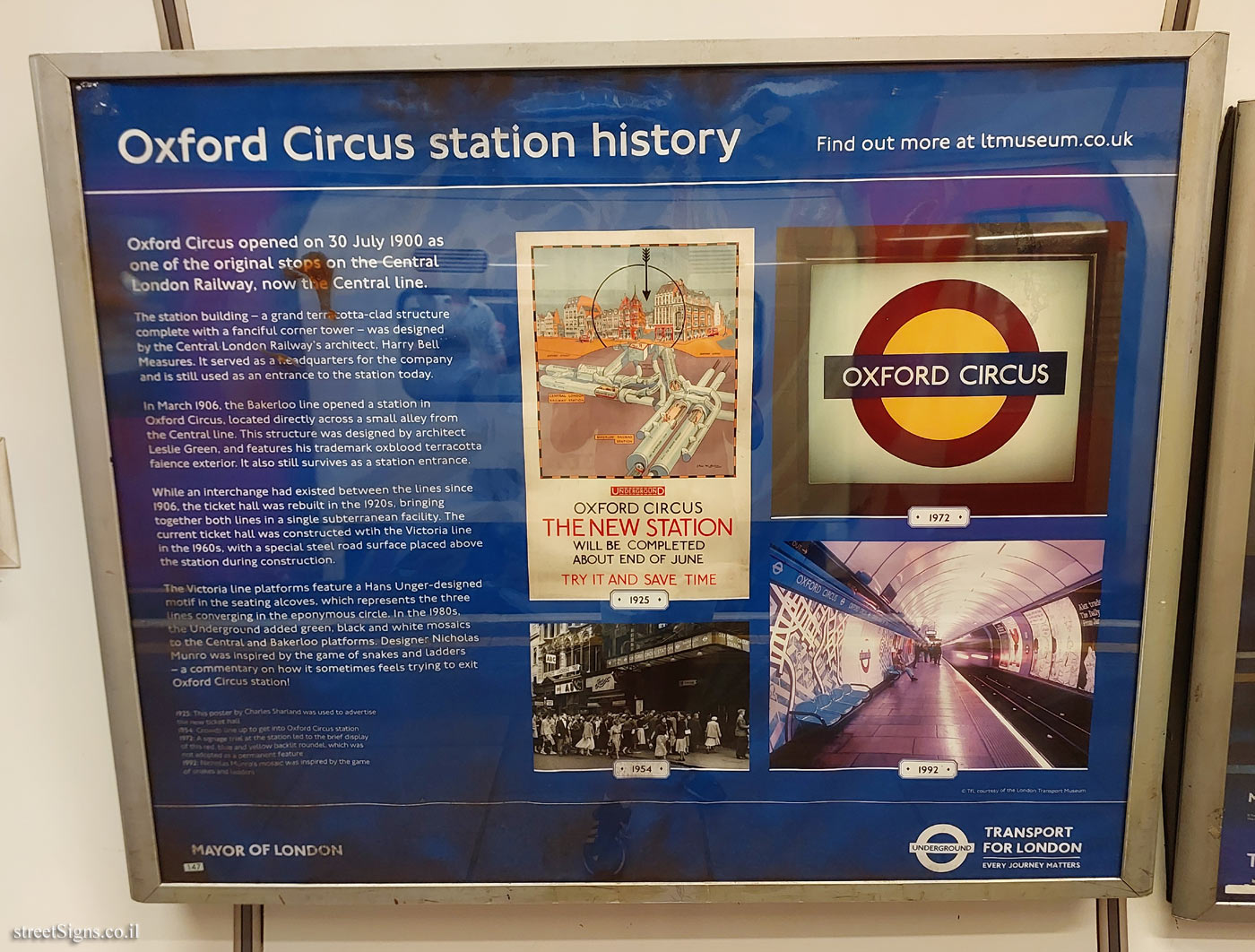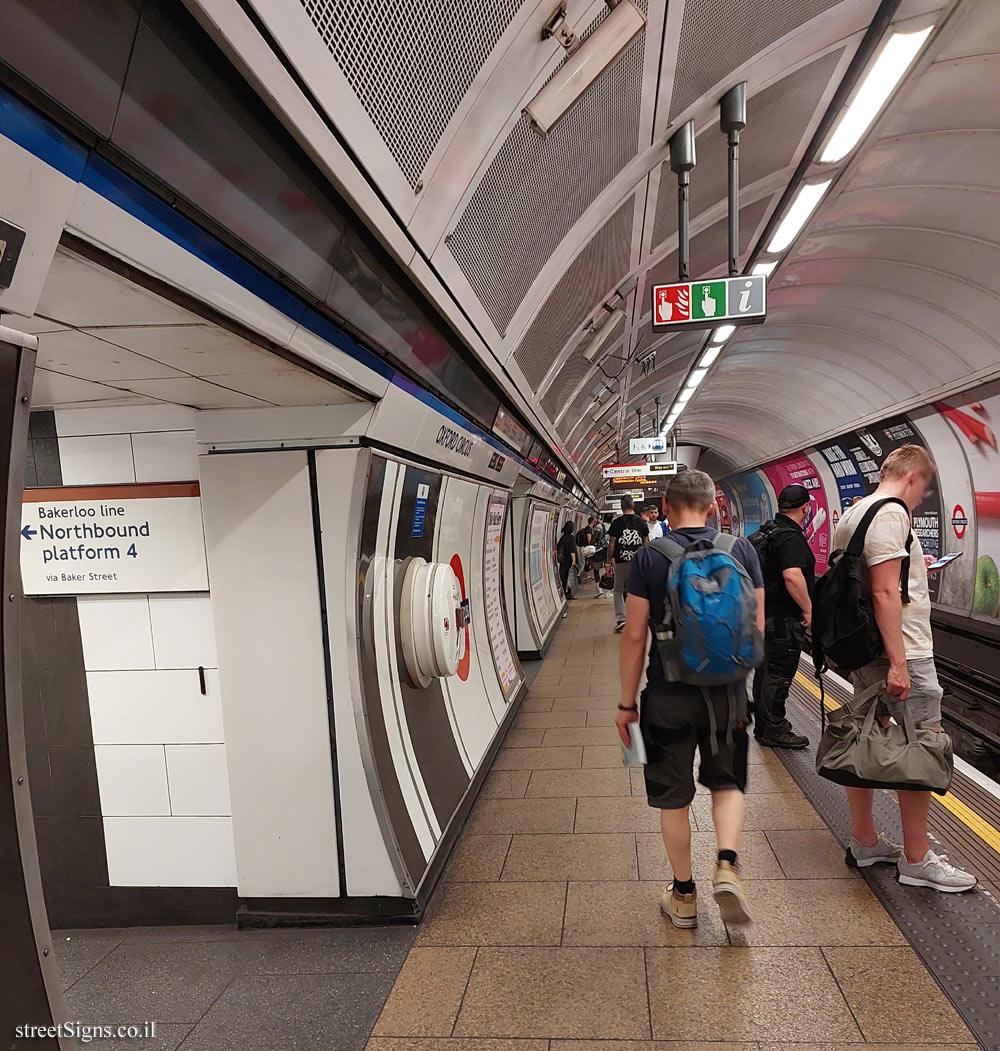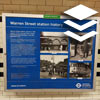LONDON UNDERGROUND HISTORY
Oxford Circus station history Find out more at
www.ltmuseum.co.uk Oxford Circus opened on 30 July 1900 as one of the original stops on the Central London Railway, now the Central line.
The station building - a grand terracotta-clad structure complete with a fanciful corner tower - was designed by the Central London Railway’s architect, Harry Bell Measures. It served as a headquarters for the company and is still used as an entrance to the station today.
In March 1906, the Bakerloo line opened a station in Oxford Circus, located directly across a small alley from the Central line. This structure was designed by architect Leslie Green, and features his trademark oxblood terracotta faience exterior. It also still survives as a station entrance.
While an interchange had existed between the lines since 1906, the ticket hall was rebuilt in the 1920s, bringing together both lines in a single subterranean facility. The current ticket hall was constructed with the Victoria Line in the 1960s, with a special steel road surface placed above the station during construction.
The Victoria line platforms feature a Hans Unger-designed motif in the seating alcoves, which represents the three lines converging in the eponymous circle. In the 1980s, the Underground added green, black and white mosaics to the Central and Bakerloo platforms. Designer Nicholas Munro was inspired by the game of snakes and ladders - a commentary on how it sometimes feels trying to exit Oxford Circus station!
[Images]
1925: This poster by Charles Shariand was used to advertise the new ticket hall
1954: Crowds line up to get into Oxford Circus station
1972: A signage trial at the station led to the brief display of the red blue and yellow backlit roundel, which was adopted as a permanent feature
1992: Nicholas Munro’s mosaic was inspired by the game of snakes and ladders
MAYOR OF LONDON
Logo of the Underground
TRANSPORT FOR LONDON - EVERY JOURNEY MATTERS
© TFL courtesy of the London Transport Museum
147


 Click for a larger image
Click for a larger image  Click for all signs belonging to London Underground History
Click for all signs belonging to London Underground History
 780 Meter |
780 Meter |  1.08 Km |
1.08 Km |  1.34 Km |
1.34 Km |  1.34 Km |
1.34 Km |  1.34 Km
1.34 Km